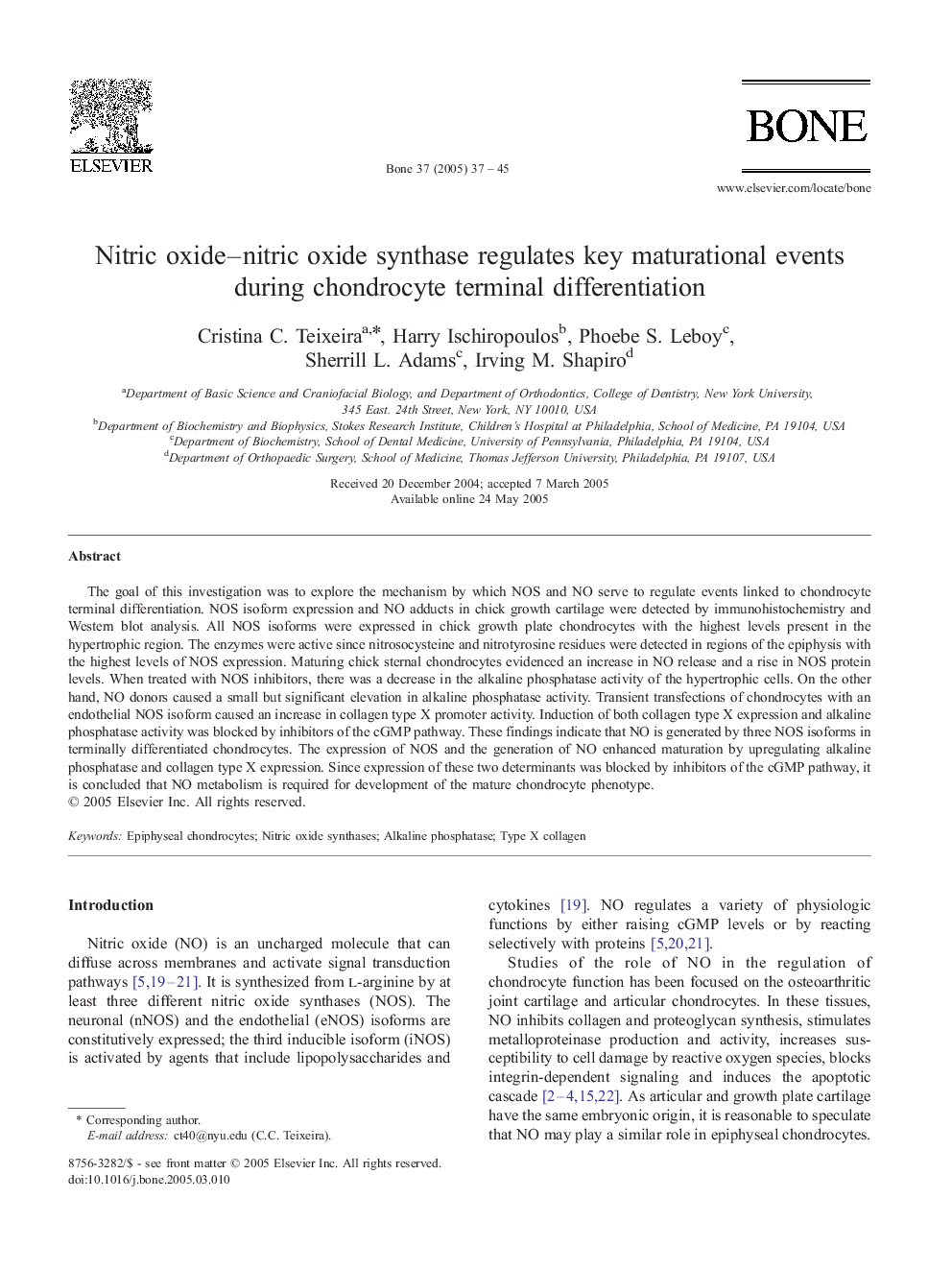| Article ID | Journal | Published Year | Pages | File Type |
|---|---|---|---|---|
| 9104798 | Bone | 2005 | 9 Pages |
Abstract
The goal of this investigation was to explore the mechanism by which NOS and NO serve to regulate events linked to chondrocyte terminal differentiation. NOS isoform expression and NO adducts in chick growth cartilage were detected by immunohistochemistry and Western blot analysis. All NOS isoforms were expressed in chick growth plate chondrocytes with the highest levels present in the hypertrophic region. The enzymes were active since nitrosocysteine and nitrotyrosine residues were detected in regions of the epiphysis with the highest levels of NOS expression. Maturing chick sternal chondrocytes evidenced an increase in NO release and a rise in NOS protein levels. When treated with NOS inhibitors, there was a decrease in the alkaline phosphatase activity of the hypertrophic cells. On the other hand, NO donors caused a small but significant elevation in alkaline phosphatase activity. Transient transfections of chondrocytes with an endothelial NOS isoform caused an increase in collagen type X promoter activity. Induction of both collagen type X expression and alkaline phosphatase activity was blocked by inhibitors of the cGMP pathway. These findings indicate that NO is generated by three NOS isoforms in terminally differentiated chondrocytes. The expression of NOS and the generation of NO enhanced maturation by upregulating alkaline phosphatase and collagen type X expression. Since expression of these two determinants was blocked by inhibitors of the cGMP pathway, it is concluded that NO metabolism is required for development of the mature chondrocyte phenotype.
Related Topics
Life Sciences
Biochemistry, Genetics and Molecular Biology
Developmental Biology
Authors
Cristina C. Teixeira, Harry Ischiropoulos, Phoebe S. Leboy, Sherrill L. Adams, Irving M. Shapiro,
